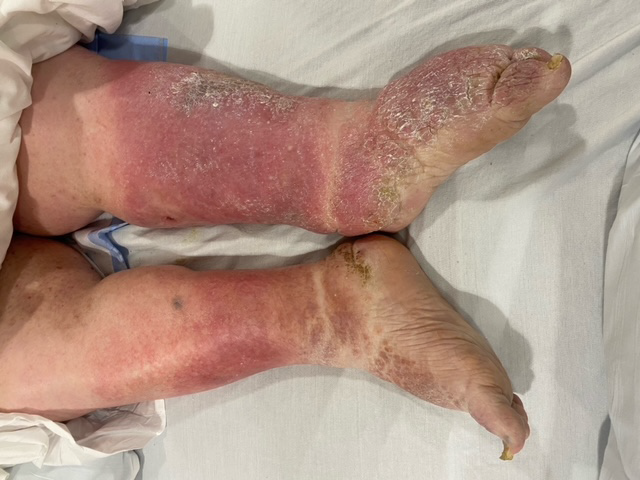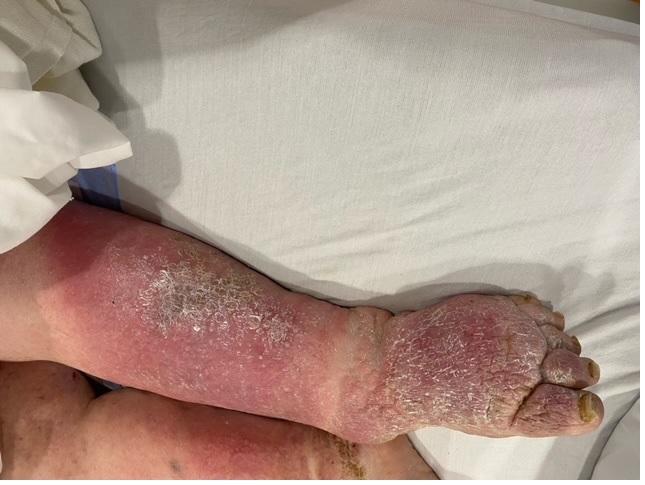
Journal of Clinical Images and Medical Case Reports
ISSN 2766-7820
Case Report - Open Access, Volume 2
A rare entity of non-filarial lymphedema
Christopher Stauch*; Moein Jafari; Hyma Polimera
Penn State College of Medicine, Hershey, Pennsylvania, USA
*Corresponding Author : Christopher Stauch
Department of Internal Medicine, Medstar Washington Hospital Center, Washington DC, USA
Email: cstauch@pennstatehealth.psu.edu
Received : Feb 19, 2021
Accepted : Mar 26, 2021
Published : Mar 30, 2021
Archived : www.jcimcr.org
Copyright : © Farooq S (2021).
Clinical image description
Patient is a 77 year old female who presented to the outpatient dermatology clinic due to progressive massive leg swelling. Physical exam demonstrated bilateral lower extremity chronic lymphedema with stasis dermatitis changes with the left more significant than the right. The patient was diagnosed with elephantiasis nostras verrucosa (ENV) and was treated with leg elevation and arranged for follow-up with a chronic lymphedema clinic. ENV is a rare complication of non-filarial chronic lymphedema. Its pathogenesis is characterized by long-standing lymphatic obstruction, which may occur due to a variety of obstructive diseases. This can lead to accumulation of proteinaceous fluid in the dermis and subcutaneous tissues causing further lymphatic obstruction and edema followed by hyperkeratosis, fibrosis, and formation of papillated, verrucous papules. Differential diagnoses to consider include venous stasis dermatitis, cellulitis, lipodermatosclerosis, pretibial myxedema, and lymphatic filariasis. Mainstays of treatment of ENV include elevation of the affected body part, compressive hosiery, and antibiotic prophylaxis for superimposed infection [1].
Citation: Stauch C, Jafari M, Polimera H. A rare entity of non-filarial lymphedema. J Clin Images Med Case Rep. 2021; 2(2): 1037.


References
- Routh HB. Elephantiasis. Int J Dermatol. 1992; 31(12): 845-52.
